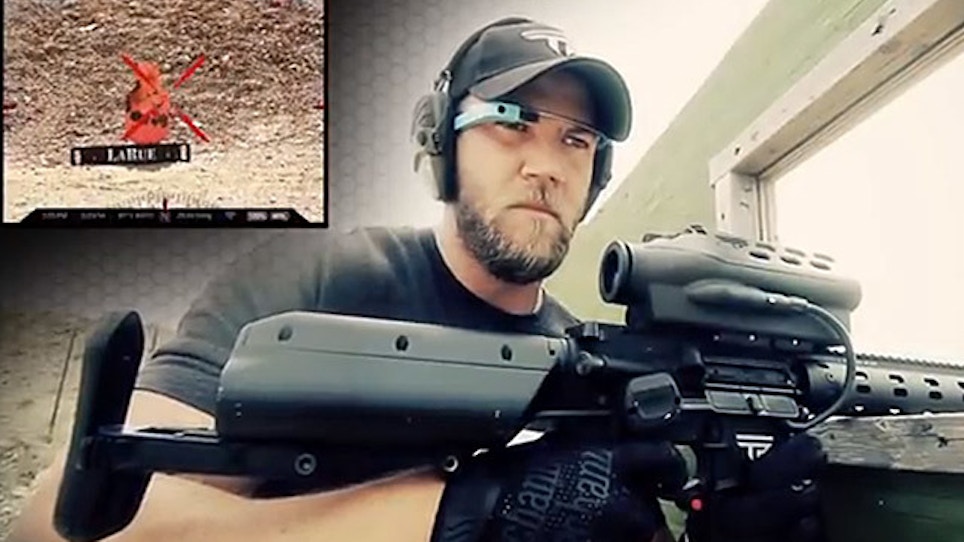To hear cofounder and now CEO John McHale tell it, TrackingPoint is a solid company with strong sales that suffered from poor planning and leadership.
The technology made possible by the company — a rifle that can hit a coyote in a dead sprint at 700 yards — is both exciting and practical, albeit reachable only to the most affluent of firearms customers. The $15,000 average price of a TrackingPoint rifle didn’t stop the company from selling 1,000 guns last year — a ???% increase in sales over the previous period.
And it’s that simple truth as McHale tells it that helped TrackingPoint pull out of its nosedive and get back on target.
“We were spreading like a Texas grass fire in August,” McHale said in an interview with Shooting Sports Retailer. “We know there’s a big market for our guns, and we know we can grow rapidly to meet it.”
So why exactly did the Texas-based rifle maker turn over three CEOs in as many years, cut most of its workforce in February and close up shop for nearly six months in May?
McHale says it was simply a question of buying too many parts for rifles that weren’t being bought.
“That put us in a position where a tremendous amount of our cash got consumed for inventory purchases,” he said. “It was by no means a problem with demand or market opportunity.”
So with a new material planning system in place, a high-powered board of directors to oversee the performance of the company and a focus on its core customer and products, TrackingPoint says it’s out of the woods.
“We’re kind of going back to our roots and realizing that we have to be more focused on the products that we’re developing and be more customer focused, and we want to really give the best customer service possible,” said TrackingPoint spokeswoman Kimberly Chung. “We’re going to make sure that for everyone who orders a gun it’s built to perfection.”
Despite the rosy outlook, former company officials said TrackingPoint’s biggest problem is McHale himself. The CEO has a reputation for being tough to deal with, treating his employees poorly and sticking to certain technologies that make the TrackingPoint system difficult to manufacture and prone to errors, two former employees told Shooting Sports Retailer.
McHale brushed the criticism aside, arguing he’s been a successful CEO at several other technology companies, gets along well with his board and has held onto executives that match his vision.
“When people don’t really understand what’s happening they always look for the bad guy,” McHale said. “What’s reported is the fantasy, it’s just not the truth.”
McHale said he’s made $1.7 billion in revenue for five different companies, two of them on the NASDAQ stock exchange, and has retained former TrackingPoint CEOs John Lupher, now head of engineering, and Frank Bruno, now COO.
“Lupher and I and Bruno read those [negative] things and get a good chuckle, it’s just not true,” McHale added.
Aside from management woes, TrackingPoint has faced headwinds from a skeptical market that was unwilling to pay the high cost for a PGF and from state game offices that are trying to ban the technology for hunting due to ethics concerns.
McHale argued this kind of fear of the unknown isn’t unexpected.
“Every time somebody builds a disruptive technology or product, those kinds of reactions always happen,” McHale said. “There’s always an anachronistic section to any market that wants to hold onto the past. And there’s nothing we can do about that.”
McHale said that TrackingPoint’s most popular rifle is the 5.56 AR-15 precision-guided rifle. The company says it will put on hold its .300 Win. Mag. variant of the PGF, focusing on four core guns, including the .338 Lapua Magnum bolt gun and three AR platforms.
TrackingPoint will also continue to pursue its Shot Glass platform, which uses a Google Glass-like eyepiece for targeting and recording a shot, and McHale said the company would release new products in late November.
Officials say the company secured $8 million in investment capitol to help pull out of its cash crunch, and will start back up with about 15 employees. The company will likely hire more in the coming months, and TrackingPoint plans to be profitable within two years.
“We are committed to sticking to a budget,” Chung said. “There was a perception that the company always had lots of money, which obviously doesn’t work. Otherwise you’re going to be in a situation like we were earlier this year where you’re just spending more money than you have coming in.”
But officials say they’ll make the investment to bring more bang for the consumer’s buck by adding the so-called “Elite Experience” for every rifle purchase. That means anyone who buys a TrackingPoint rifle — no matter the model — will be invited to the factory to learn about the rifle and how to shoot it.
“Everybody that orders a gun, we will foot the bill. … Our elite experience will comprise of hotel and food, tour of our facilities, a day at a shooting range with TrackingPoint staff showing you how to use the gun, in-person delivery of the gun and answering any questions a customer might have,” Chung said. “It’s going to be an elite delivery experience.”
McHale added that since his company’s rifles are premium products, he wants the rifle buyers to be treated the same and expects to build a community around owning one.
“Just like all premium brands, they develop a relationship with their elite buyers so they reference your product, and really just to have fun and build a community,” McHale said.
Chung said for now TrackingPoint rifles will only be available directly from the company, but that if demand increases, they’re open to retail sales.






